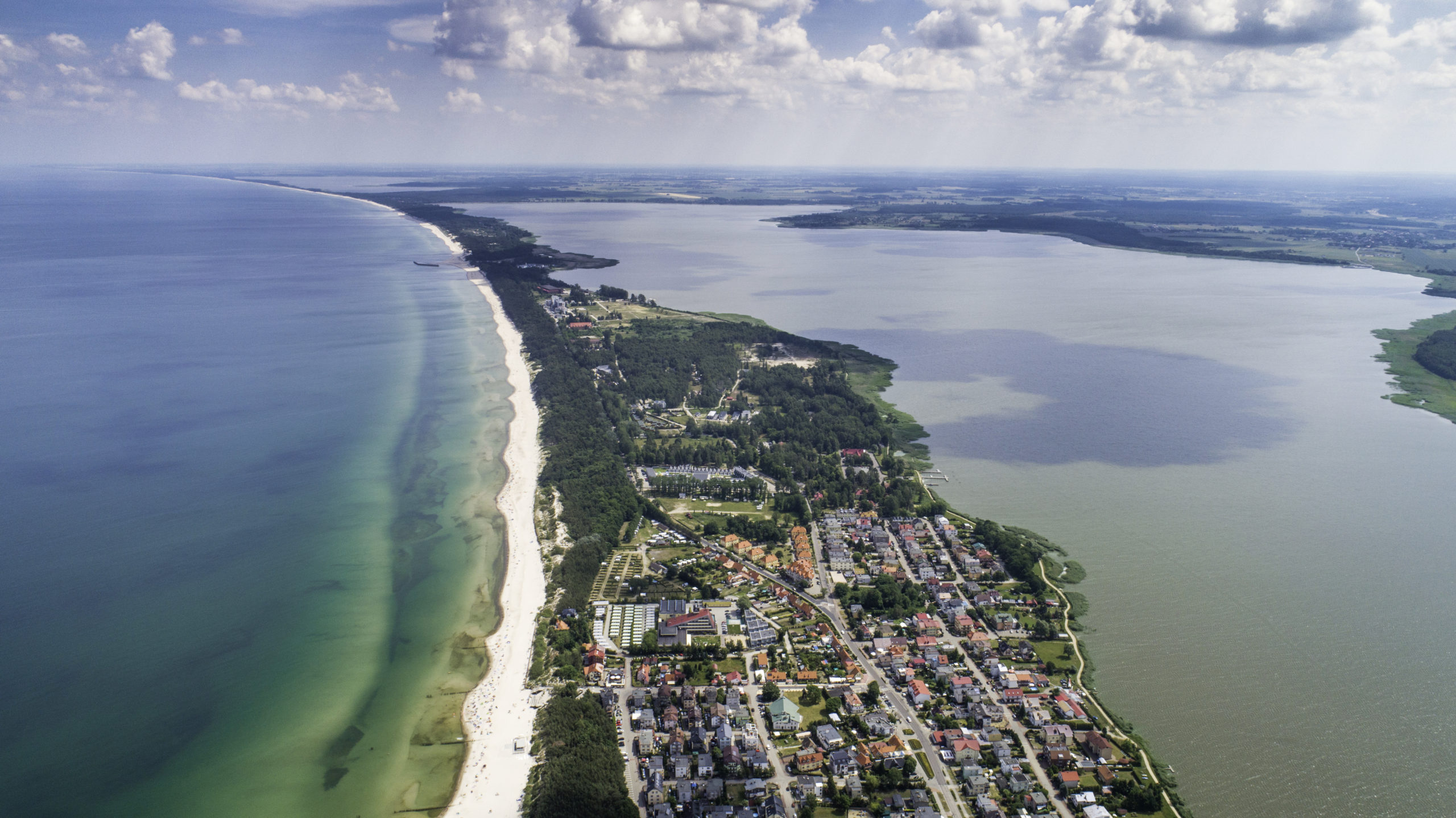Modification of the floodway system on the Jamno Canal and the flood protection of Darłowo are the most important measures in the draft updated flood risk management plan (uFRMP) in the Lower Oder and West Przymorze Region discussed on 12 May during the consultation meeting in Koszalin.
“The area of the basin administered by the board in Koszalin is constantly exposed to adverse hydrological phenomena relating to the short distance to the Baltic Sea. We have carried out works aimed at reducing flood hazard for years here. We keep in mind that those are areas with intense tourism, and we keep improving the comfort of running such an activity. The public consultations keep proving how important this is for local communities”, said before the meeting in Koszalin Marek Gróbarczyk, Secretary of State in the Ministry of Infrastructure, responsible for the aspects of water management and investments in the maritime and water sector.
An important concern for the residents of Koszalin and neighbouring areas
Jamno is a shallow coastal lake with a large area (9th in terms of area in Poland and 3rd in the West Pomeranian voivodeship) situated in the macroregion of Koszalin Coastland. The neighbouring agricultural land contributes to the progressing degradation of Jamno lake by excess fertilization of soil and its reduced oxygen content and, consequently, aggravates the ecological disaster danger. The lake has an artificial connection with the Baltic Sea by means of the Jamno Canal. The engineering structures situated on it are what needs modernisation. “The major purpose of the floodway system reconstruction is to increase the flood safety for the residents of Koszalin as well as towns, villages and land adjoining Jamno lake. Another important aspect is to meet the environmental objectives as we hope to restore the natural inflow of sea water into the lake and to achieve significant reduction of its eutrophication which has aggravated for years”, said Marek Duklanowski, director of Państwowe Gospodarstwo Wodne Wody Polskie, Regionalny Zarząd Gospodarki Wodnej in Szczecin.
Continuous hazard reduction
Eliminating the bloom of cyanobacteria being the most perceptible indicator of dangerous processes taking place in the lake is not the only problem of this West Przymorze region. An important investment is the regulation of the Rega river from Kłodkowo to Gąbin by valley retention and the construction of flood control embankments on the river near Gąbin (the total cost is PLN 39 million). The Rega is one of the largest rivers in the seaside, used for tourist purposes intensely (canoeing) and famous for its highly attractive angling areas (with a predominant brown trout; the downstream Rega is entered by such anadromous fish as salmon and sea trout which come here to spawn). In the problem area of Polnica-Sianów, there are plans concerning retention in the basin of the Uniesta and the Polnica rivers. Improving the water flow conditions in the town and commune of Darłowo, including flood protection measures, is an investment in the problem area of Wieprza-Darłowo. Continuous attention is also deserved by the existing hydroengineering structures and embankments of the local water reservoirs and rivers. In uFRMP, there are 33 flood control measures planned for the whole region.
Plans for 6 years
The flood risk management plans (FRMP) updated now are, besides the water management plans and the plan of combating drought effects, the third planning document structuring water management in Poland. FRMP reviews and updates take place every 6 years in a way coordinated with the reviews of water management plans for the river basin. FRMP are the final, fourth planning document required under the Flood Directive. The first stage of works relating to FRMP preparation is the preliminary flood risk assessment (WORP) aimed at identifying areas exposed to the flood risk, i.e. the ones with a significant flood risk or where the high risk is probable. A subsequent step is preparing flood hazard maps (MZP) and flood risk maps (MRP) for those areas to indicate the flood zone limits precisely.
Public consultations in the whole Poland
The public consultations of the draft updated flood risk management plans announced on 22 December 2020 by the Minister of Infrastructure are coordinated by Państwowe Gospodarstwo Wodne Wody Polskie. The consultation meetings are planned to take place in 28 towns and cities. The meeting in Koszalin was 24th discussion dedicated to uFRMP. Because of significant interest and the need to discuss the problems concerning the flood risk from the sea in detail, the Minister of Infrastructure extended the uFRMP consultations till 22 September 2021. The basic part of the plans discussed is the list of measures for particular basin and water resource region areas for years 2022–2027. This includes more than 1,100 items for the basins of the Wisła, the Oder, the Elbe, the Danube, the Niemen, and the Pregoła river. The planned cost of the required expenditure is more than PLN 29 billion. The draft updated flood risk management plans, complemented with requests and comments provided during the consultations, shall be adopted by means of the regulations of the minister competent for water management, i.e. the Minister of Infrastructure. Due to the pandemic-related restrictions, the meetings have taken place on-line.
Within the pending public consultations, the meetings in Kraków, Nowy Sącz, Gliwice, Pszczyna, Gorzów Wlkp., Poznań, Kalisz, Bydgoszcz, Piła, Rzeszów, Jasło, Stalowa Wola, Białystok, Olsztyn, Włocławek, Radom, Warsaw, Lublin, Dęblin, Wrocław, Zgorzelec, Nysa, and Szczecin have been held so far. For more information on uFRMP, consulted documents and public consultations, visit www.stoppowodzi.pl

